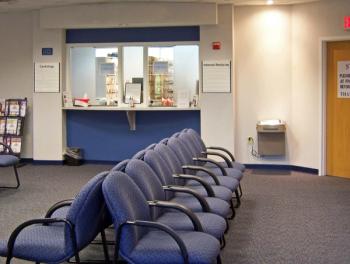
- December 10, 2019 Edition
- Volume 96
- Issue 23
How to manage accounts receivable
The ability to maximize collections and profitability is vital for medical practices.
Sound accounts receivable (A/R) management is integral to the financial health of a medical practice. The ability to maximize collections and profitability depends on it. Thus, it’s important that practices know what processes they can implement to ensure a smooth-running AR operation.
David Norris, MD, MBA, an anesthesiologist in Wichita, Kan. and author of The Financially Intelligent Physician: What They Didn’t Teach You in Medical School, pays his practice’s employees every two weeks, but has an average A.R. cycle of 45 days, meaning it takes about three pay periods for him to earn what he’s already paid out to his staff. So having an efficient A/R process makes possible the cash flow that, in turn, lets him pay his employees on time. “You want a system that is very accurate and gets as much of the money into the practice as quickly as possible,” he says.
Start with Verifying Data
Obtaining and verifying current insurance information, including any recent changes in coverage-preferably before the patient arrives-is essential to that accuracy and efficient income stream. So is properly coding patient visits, entering the correct data into the billing system, billing insurance on that basis and posting and adjusting the resulting payment.
“So let’s say the bill was $100, your contract with the insurance company says you take $80, and there’s a coverage for 80 percent, where the remainder has to be charged to the patient,” says Jeffrey Kagan, MD, who operates an internal medicine practice in Newington, Conn. and is a Medical Economics editorial adviser. “If you can know all that information up front you can tell the patient they owe you $16 before they get out of the office.”
But Kagan says that might not be the end of it. If the patient has Medicare coverage and supplemental insurance, and the latter gets billed for that 20 percent not covered by Medicare, the practice has to verify that the secondary insurer has received the bill from Medicare, that the secondary insurer’s data is correct, and if the supplemental coverage is still in force.
Finally, after the practice gets a list of excluded items that didn’t get paid by Medicare or an insurer, the staff must review and resubmit them if. Only then, after the practice has exhausted all those efforts to get money from the insurance company, can it go back to the patient to collect what hasn’t been covered by their deductible, says Kagan.
A practice doesn’t want to go through all of that a second time because somebody made even a minor error along the way. “The most important function of the A/R process is to get that claim out right the first time,” says Margo Williams, MHA, CMPE, a senior associate in the medical practice department at the American College of Physicians.
Making Obligations Clear to the Patient
Getting revenue cycle management right depends, in large part, on making sure patients understand what they owe to their insurance company and to the practice and holding them accountable for those obligations.
“That’s where the breakdown happens, because providers don’t invest the time up front to make sure the patient knows what their responsibilities are,” says David Zetter, CHBC, founder of Zetter Healthcare, a healthcare practice management consulting firm in Mechanicsburg, Pa. “And that’s why they’ve been chasing money for years.”
To prevent that breakdown, the practice should verbally inform all its patients what their payment expectations are, have them sign an agreement containing that information, and ensure that back-office staff know about and support that agreement. This is a financial policy that clearly spells out what’s expected of both patients and staff.
To minimize the possibility of any misunderstandings, the staff should discuss the policy’s main points with the patients. As well, the policy must be enforced uniformly (e.g., the practice will collect a copay at the time of service; it will request some kind of payment if a high-deductible plan applies.)
“The biggest challenge there, if you have more than one owner, is making sure the owners buy into their own process,” says Zetter, alluding to practices where doctors waive copays for friends-a behavior that, if repeated, means the practice has breached its contract with its commercial insurers and likely violated Federal law (because it’s probably seeing Medicare and/or Medicaid patients). If it bills the insurance company while waiving the copay, the practice has committed fraud.
Unfortunately, few practices have what Zetter insists must be in that policy: a clear-cut assignment of benefits that gives practices the right to bill and be paid by patients’ insurance. Indeed, Zetter estimates that “probably 90 percent” of practices “do not have a legally binding, worded contract of assignment of benefits that their patients are signing.
“If an auditor sees that an assignment of benefits is worded incorrectly, and truly doesn’t provide them the right to bill, then the payer can ask for every single dime back,” he says.
Zetter is adamant that sending out patient statements and doing follow-up calls to retrieve tardy payments doesn’t work any longer. “It’s an archaic process that’s been going on since the days of Marcus Welby,” he says, adding that it’s better to establish processes to guarantee the money up front, including keeping a credit or debit card on file. Then, when the balance falls to the patient account, the practice already has approval from the patient because it has communicated this information, and it can start billing that balance and get paid immediately.
Keeping Tabs on Payers and Problems
Monitoring and managing your payers to see how much they have in the A/R pipeline is a vital task, according to Norris. His practice’s staff generates a monthly report, broken into 30-, 60-, 90- and 120-day A/R cycles, showing who owes them how much money, how many of those dollars are still uncollected, and if that number is rising. Then he tracks denials –what’s being denied and, just as important, why.
“Are they playing games? Is it something on our end like we’re not coding things right? Are people making certain the claim is ready to be submitted as a clean claim or are we just trying to get as many bills out the door as fast as possible, where we’re just missing things that wind up costing us money as we try to reprocess that claim?” he says.
With denials, spotting trends is crucial in discovering where the problem lies. “Are claims being denied for certain things for which they haven’t been denied before?” asks Norris. “If you see that, I would get on the phone with that carrier to see if I could come to a resolution.”
Practices can’t afford to leave money on the table or be slow in collecting it. For Williams, staff training is essential in preventing that. “Process breakdowns could be any number of things, including that staff, when they’re working on insurance and patient balances, may be writing off things that are collectible,” she says. “And they need to know at what point do you escalate problems with insurance companies that aren’t paying properly.”
It’s A/R staff’s responsibility to identify any breakdowns that delay payments, including technical problems such as computer or clearinghouse glitches. “But if you’ve got an astute staff that are running regular reports and know what they should be looking for, then they should be able to stay on top of collections,” says Williams.
Patients sometimes dread talking with A/R departments, which is why adopting a payments policy that’s consistently applied, and coupling it with a flexibility to work with patients on a payment plan can make that conversation easier on both ends. So it helps if A/R can tell patients with a financial hardship upfront that the practice is willing to work out an installment plan with them. Kagan suggests what a hypothetical deal might look like: “If you’ve got a deductible of $3,000 and you owe me $800, I’d be thrilled if you gave me $100 a month,” he says.
“Having a smooth patient portal where you can store credit card information can help you engage with the patient, too,” says Norris. So can having a human touch, which the practice can encourage by training staff members how to politely but firmly ask for payment on the day of the visit.
Finally, practices must ensure that their statements are more patient-friendly than the typical physician’s handwritten prescription in the pre-digital days. Otherwise, the patient may be forced to call the billing staff and ask them to interpret something that makes no sense to them– something nobody enjoys doing.
“It’s often necessary to work with your process vendor to make sure that the statements are easily understood,” says Williams.
Ultimately, successful A/R is about two basic, but not necessarily simple, tasks: keeping close tabs on the accounts, every day, and getting timely payments. “Those are going to be your main challenges: figuring out who owes you and then when you can collect it,” Norris says.
Articles in this issue
over 5 years ago
How implicit bias harms patient careabout 6 years ago
How to generate revenue, improve patient careabout 6 years ago
Medical Economics cartoon: Litigation strategiesabout 6 years ago
Defending against defamatory online reviewsabout 6 years ago
2019 Physician Writing Contest: The hope of living betterabout 6 years ago
6 tips to boost billing and collectionsabout 6 years ago
Get your practice ready for 2020Newsletter
Stay informed and empowered with Medical Economics enewsletter, delivering expert insights, financial strategies, practice management tips and technology trends — tailored for today’s physicians.















